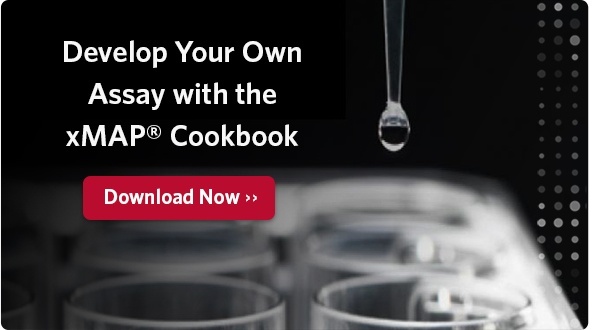Woei Tan, PhD, is a Senior Staff Scientist at Bio-Rad Laboratories in the San Francisco Bay Area. Tan shares a few best practices that he’s learned while developing more than 400 Bio-Plex multiplex immunoassays over the past 15 years.

 Plasma is processed from blood in the presence of an anticoagulant. Serum is processed from blood without an anticoagulant. The sample matrices are different for plasma and serum so conduct your study with one sample type to ensure data continuity.
Plasma is processed from blood in the presence of an anticoagulant. Serum is processed from blood without an anticoagulant. The sample matrices are different for plasma and serum so conduct your study with one sample type to ensure data continuity.
 Be consistent with the method of sample collection and storage as these factors can impact the consistency in sample measurement. For cytokine analysis, be sure to avoid multiple freeze-thaw cycles as this will decrease the stability of certain cytokines in the sample. Instead, prepare and freeze multiple aliquots of the same sample for single use.
Be consistent with the method of sample collection and storage as these factors can impact the consistency in sample measurement. For cytokine analysis, be sure to avoid multiple freeze-thaw cycles as this will decrease the stability of certain cytokines in the sample. Instead, prepare and freeze multiple aliquots of the same sample for single use.
 Bio-Plex assays are specially optimized for the specific volume of the assay as written, not just the proportion of the reagents. If you must deviate from the default instructions, be sure you run a validation study. While diluting reagents or splitting kits might be tempting, it will compromise assay performance and data reliability, negating any small cost savings you may think you are gaining.
Bio-Plex assays are specially optimized for the specific volume of the assay as written, not just the proportion of the reagents. If you must deviate from the default instructions, be sure you run a validation study. While diluting reagents or splitting kits might be tempting, it will compromise assay performance and data reliability, negating any small cost savings you may think you are gaining.


- Selecting targets
- Sourcing of antibodies from trusted vendors and screening of antibody pairs
- Refining of buffer formulation
- Constructing and calibrating curves
- Optimizing assays to reduce cross-talk
 Don’t rely solely on validation data from western blot or ELISA, as antibodies validated on these platforms don’t always perform as expected in the multiplex assay environment. For example, in ELISA, antibodies are attached via passive adsorption versus covalent coupling in Bio-Plex, which may result in altered antibody behavior. It’s essential to validate extensively and explicitly in a multiplex assay environment.
Don’t rely solely on validation data from western blot or ELISA, as antibodies validated on these platforms don’t always perform as expected in the multiplex assay environment. For example, in ELISA, antibodies are attached via passive adsorption versus covalent coupling in Bio-Plex, which may result in altered antibody behavior. It’s essential to validate extensively and explicitly in a multiplex assay environment.
Bio-Plex is a trademark of Bio-Rad Laboratories, Inc.
Luminex supports life science research with its Research Use Only (RUO) product portfolio. Not for use in diagnostic procedures.
